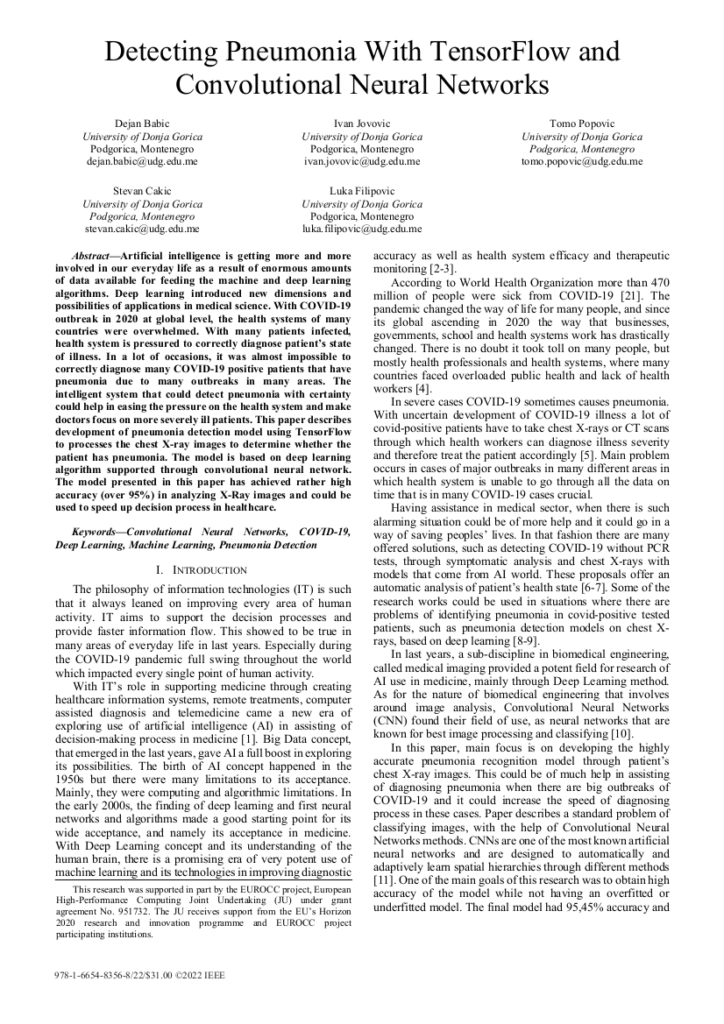Researchers from EuroCC Montenegro presented two papers at the IEEE International Conference on Omni-Layer Intelligent Systems (COINS). IEEE COINS (link) is the right place to be. IEEE COINS brings together experts in Digital Transformation (from AI and IoT to Cloud, Blockchain, Cybersecurity, and Robotics) from around the globe. IEEE COINS includes a multi-disciplinary program from technical research papers, to panels, workshops, and tutorials on the latest technology developments and innovations addressing all important aspects of the IoT & AI ecosystem. The conference took place 1-3 August in Barcelona.

The paper called “Detecting Pneumonia with TensorFlow and Convolutional Neural Networks”, authored by D. Babic, I. Jovovic, T: Popovic, S. Cakic and L. Filipovic discussed the use of deep learning and HPC to create prediction models aimed at detecting pneumonia in chest x-ray images.
ABSTRACT – Artificial intelligence is getting more and more involved in our everyday life as a result of enormous amounts of data available for feeding the machine and deep learning algorithms. Deep learning introduced new dimensions and possibilities of applications in medical science. With COVID-19 outbreak in 2020 at global level, the health systems of many countries were overwhelmed. With many patients infected, health system is pressured to correctly diagnose patient’s state of illness. In a lot of occasions, it was almost impossible to correctly diagnose many COVID-19 positive patients that have pneumonia due to many outbreaks in many areas. The intelligent system that could detect pneumonia with certainty could help in easing the pressure on the health system and make doctors focus on more severely ill patients. This paper describes development of pneumonia detection model using TensorFlow to processes the chest X-ray images to determine whether the patient has pneumonia. The model is based on deep learning algorithm supported through convolutional neural network. The model presented in this paper has achieved rather high accuracy (over 95%) in analyzing X-Ray images and could be used to speed up decision process in healthcare. (link)


